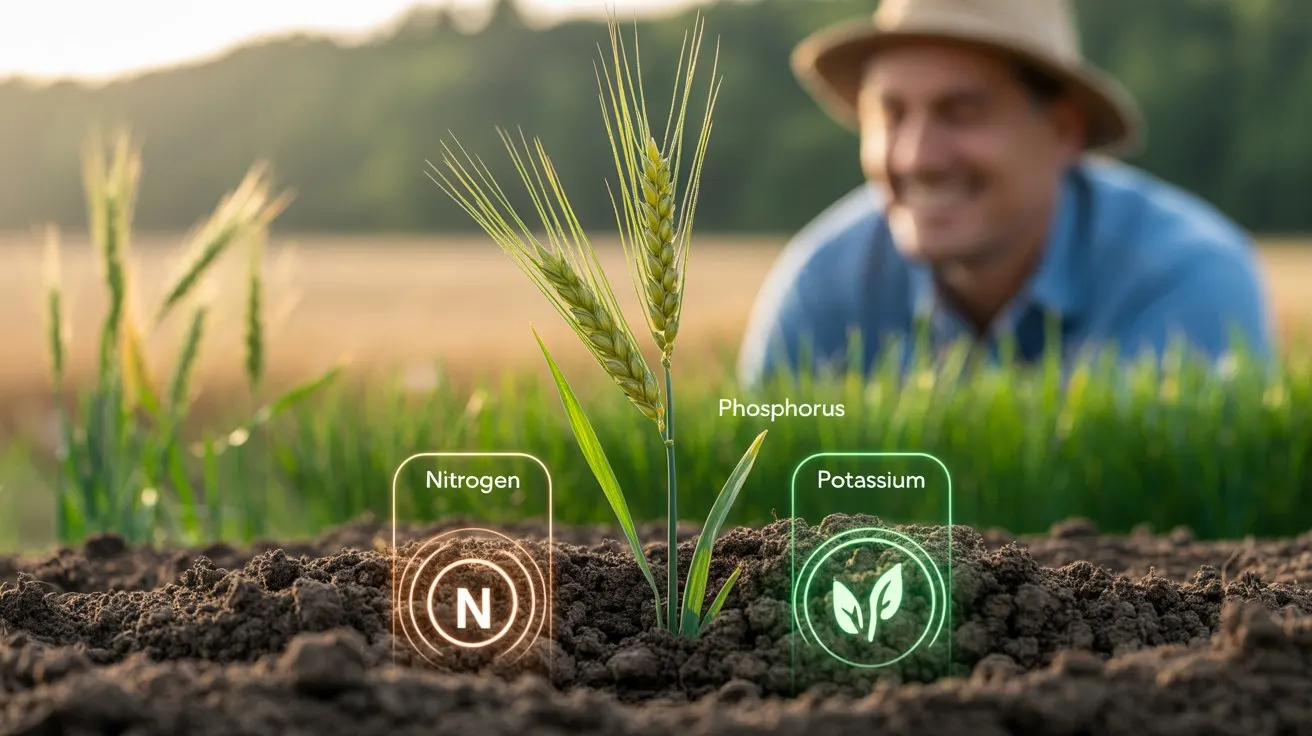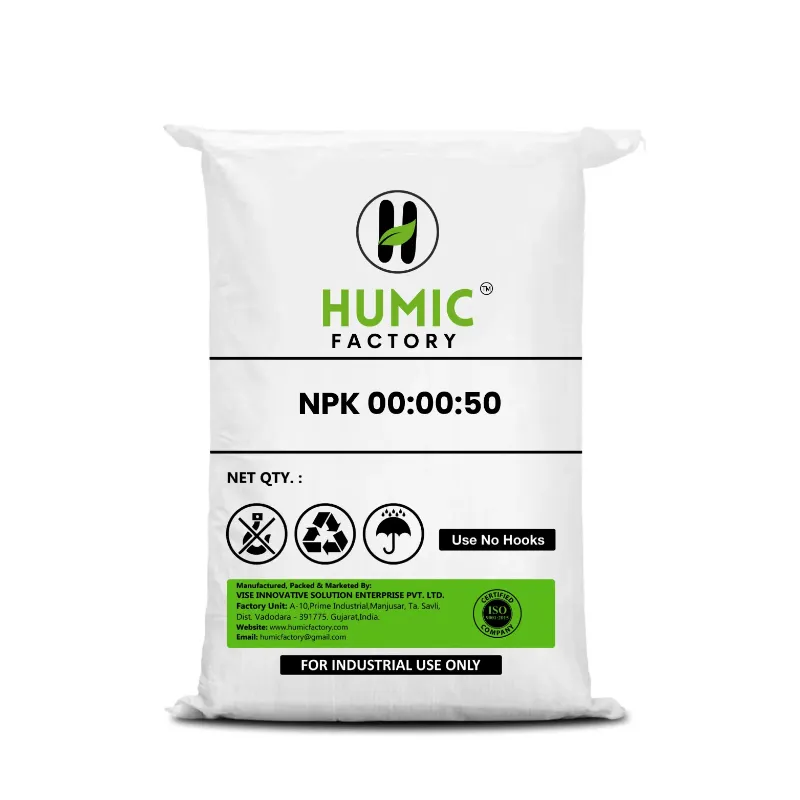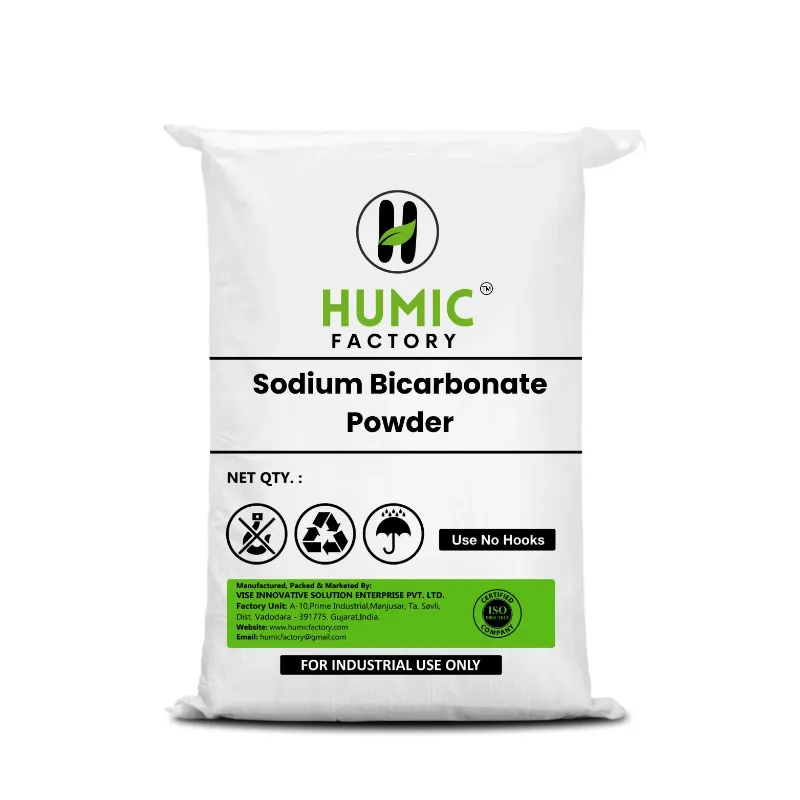NPK fertilizers come in many different variations and combinations to satisfy the needs of plants in all stages of development. Accordingly, each NPK fertilizer has their own unique composition of:
- nitrogen (N),
- phosphorus (P),
- potassium (K);
Thus, knowing right NPK mix will be the best defense in promoting growth of plants that are healthy and fruitful. Having an understanding of the different types of NPK fertilizer, will allow gardeners and farmers to make better informed decisions for their gardening or farming operations.
The different types of NPK will all have different use cases and functionality. For a simple example, equal amounts of three nutrients, i.e. 10-10-10, 20-20-20 etc. are balanced formulas - and are suitable for general feeding. If the targeted goal is leafy growth, we would select a blend high in nitrogen, if sending out roots or flowers we would slide towards phosphorus, if strengthening, like getting a tree to grow strong for the elements, the fertilizer would have heavy K sodium. There are also blends heavy in nitrogen and phosphorus - which would be imitatively for flowering plants as an example.
When looking at the range of NPK all types, it is simply replacing the fertilizer based on the needs of the plant(s) or environment and the condition of the soil. The growth of all or just some plants is affected by the ancestral composition of nutrients, including macronutrients and micronutrients. Ultimately, each plant has its preferences and tolerances and correct types of NPK fertilizer ensures you minimize rather than building up too high or too low nutrient level, which will obviously inhibit growth. Continuously testing the soil can help you determine what types of NPK will give the best results for individual or specific crop yields.
By learning how to use the different types of NPK correctly, growers can maximize plant health, improve yields, and maintain long-term soil balance. Each fertilizer type plays a role in supporting strong roots, vibrant foliage, and abundant harvests.
Introduction: Why Understanding the Types of NPK Fertilizers Is Crucial
The correct fertilizer is the foundation of healthy plants. Knowledge of the types of NPK fertilizers can help farmers and gardeners give their plant(s) exactly what they need from seedling to mature plant. Every NPK blend contains nitrogen (N), phosphorus (P), and potassium (K), but in different proportions based on crop, soil, and growing conditions, which differ from farm to farm. Choosing the right types of NPK fertilizer can mean the difference between weak plants and advancing production and/or harvests.
The importance of NPK and types of NPK for plant nutrition
Plants need a balanced diet of nutrients in order to thrive. The formulations of types of NPK are a variety of combinations of N, P, and K ratios that satisfy different plant nutrient requirements.
- N is for leafy, vegetative growth
- P provides more root and flowering strength
- K provides strength to the plant
leading to ancillary plant resistances. Different types of NPK allow growers to adjust their feeding schedules and meet optimal plant health performances. Understanding nutrient ratios is essential to prevent either nutrient deficiency or nutrient toxicity as both can negatively impact, or damage plant growth and potential yield outcomes.
Why NPK fertilizers are essential for thriving plants
Fertilizers are a great way to access, or at least replenish, nutrients that are not naturally prevalent in the soil.
- NPK fertilizers of all types provide a direct source of the three nutrients that plants need the most.
- Nitrogen helps plants produce healthy green foliage, phosphorus improves early development with the production of flowers, and potassium assists a plant’s integrity when stressed by disease, heat, drought or plant quality.
- Supporting plants with the correct types of NPK fertilizer allows them to achieve all of its growing potential from each stage, with the results of stronger roots, brighter blooms, larger fruits, or yields or amounts of fruit for sale.
How knowing the different types of NPK impacts plant growth
There are different fertilizer options available because one size does not always fit all when choosing fertilizer. Different varieties of crops, soils, and climates all need specific, common sense, solutions. Therefore, when you understand the different plant nutrients in the NPKs, growers can custom fit fertilizer blends to the specified nutritional needs of plants. In this case a leafy green crop probably needs more nitrogen than another crop that is not a leafy green.
- Similarly flowering plants would need an increased amount of phosphorus than other crops that do not flower.
- Fruit plants would typically require more potassium as well, not just to have better fruit quality, but to also hold up in storage better while waiting to be purchased.
With the correct types of NPK fertilizer plants typically develop healthier than they would otherwise produce, are of better quality, and have developed resilience against deficiencies throughout the growing season.
The Basics of NPK: What Do the Numbers Mean?
When choosing fertilizer products a working knowledge of the different types of NPK, and what the numbers on the packaging indicate, are essential. All NPK fertilizer will have a slightly different designations such as 10-10-10 or 20-5-10. These numbers are the percentage of nitrogen (N), phosphorus (P), and potassium (K) in the fertilizer product. Being able to read NPK labels will help both farmers and gardeners select the right type and mix of nutrients (NPK) for plants at the different stages of growth.
N (Nitrogen), P (Phosphorus), K (Potassium) explained
- Nitrogen (N): The first number on the label indicates the amount of nitrogen that is included in the fertilizer. Nitrogen is responsible for vegetative (leafy) growth, strong stems, and overall plant health. Adequate nitrogen is especially beneficial when growing green vegetables, grasses, and leafy types of crops.
- Phosphorus (P): The second number denotes the amount of phosphorus in the fertilizer. Phosphorus is very supportive of root development, flowering, and seed production. It is also needed for early plant growth and healthy strong root systems.
- Potassium (K): The third number refers to potassium, which works to build strength, help a plant to fight disease, and helps control water in the plant. In general, potassium is essential for plant fruit development and is a factor in overall plant strength.
Each of these nutrients may play a different role in the different types of NPK fertilizers depending on the requirements of the plants.
H3 Understanding types of NPK fertilizer labels and nutrient ratios
Fertilizer labels display NPK numbers for ease of selection for growers. The types of NPK fertilizer will change based on crop, soil, and growth stages. For example:
- A 10-10-10 fertilizer delivers equal amounts of nitrogen, phosphorus, and potassium, formulated for general-use.
- A 20-5-10 blend offers more nitrogen for rapid growth in leafy crops.
- A 5-10-20 is offered for crops focused on flowers and fruit as it has more phosphorus and potassium.
By understanding these ratios, it will allow growers to use the right types of NPK fertilizer to meet the nutrient needs of their plants and plants throughout every stage of their growth cycle.
Decoding fertilizer numbers for npk all types
There are various NPK all types available, so if we’re going to be successful we have to be able to start decoding the numbers. Each of these blends is intended to accomplish something different:
- High nitrogen NPK blends promote fast leafy plant growth.
- High phosphorus NPK blends support flowering and root development.
- High potassium NPK blends improve fruit, flowers, and plant health.
If we can learn to read and follow the fertilizer label, growers can confidently choose the best different types of NPK for their garden, field, or orchard. This particularity will help the plants perform to their best ability, and the plants will produce their best yield.
Nitrogen (N): The Growth Booster in Different Types of NPK
Nitrogen is the most significant nutrient for plants in the types of NPK fertilizers. Nitrogen is the energy behind plant growth especially during developing growth, when the different types of NPK with lower NPK content. Nitrogen fuels healthy green foliage, healthy stem growth and vegetative growth such as with leafy green plants. If plants are deficient in nitrogen they may appear pale or yellow; weak and/or not growing properly.
Nitrogen’s role in leafy growth among different types of NPK
Nitrogen is the chief growth booster in all of the types of NPK fertilizer. In plants, nitrogen fuels the production of chlorophyll which gives plants the energy to transform sunlight into energy, and with healthier, strong, vibrant leaves, plants can use photosynthesis to produce food via photosynthesis. The different types of NPK with high nitrogen content are the most important for leafy green crops like spinach, lettuce, cabbage and grasses where leafy growth is the intended end.
Types of nitrogen fertilizers: Urea, ammonium nitrate, nitrate-based
There are several types of nitrogen in kinds of NPK fertilizer blends:
- Urea (46-0-0): A highly concentrated nitrogen source that is frequently used in many NPK all types, because it is both quick and inexpensive to use in fertilizing.
- Ammonium Nitrate (34-0-0): A form of nitrogen that is easily dissolved in water, allowing for rapid delivery of nutrients directly to the roots of the plant.
- Nitrate form (Calcium Nitrate and Sodium Nitrate): Nitrates dissociate rapidly, when some fast forming crops need a source of nitrogen, nitrates will rapidly dissociate and supply the crop with nitrogen.
Each type of nitrogen serves a slightly different purpose in the different kinds of NPK, depending upon the stage of growth required by the crop, and the condition of the soil.
When to apply high nitrogen types of NPK fertilizer
Timing is crucial when using high nitrogen types of NPK. High nitrogen types of NPK need to be used under the following application methods:
- In the very early growth stages to encourage strong stem and leaf development.
- In the vegetative stage or leafy vegetables and lawns to assist with dense green coverage.
- Used cautiously in fruit and flowering plants to minimize excessive vegetative growth at the expense of flowers or fruit.
By being judicious in when to apply the right types of NPK fertilizer with appropriate nitrogen ratios, growers can promote healthy plant growth and limited problems related to commonly occurring plant problems, such as nutrient burn, delayed flowering.
Phosphorus (P): The Root and Flower Powerhouse in Types of NPK Fertilizer
In the various types of NPK fertilizers, phosphorus is critical for root function by fostering roots that are strong and provide the foundation for other growth. Phosphorus helps develop roots and flowers on plants. Without an adequate phosphorus level, plant roots can become weak, flowers poorly developed, leading to fewer crops.
Phosphorus's role in root strength across different types of NPK
In the types of NPK fertilizers phosphorus plays an important role in energy transfer within the plant. It is vital for cell division, seed germination, and vital in overall plant health. Strong root systems allow for more water and nutrient uptake for the plant, making it more resilient during dry spells or limited nutrient environments. The various types of NPK fertilizers that contain phosphorus will greatly benefit young seedlings, newly transplanted vegetable and flower plants that need more energy for blooming and fruit production.
Types of phosphorus fertilizers: Superphosphate, bone meal
Phosphorus is supplied through various sources in types of NPK fertilizer blends:
- Superphosphate: One of the most common forms used in many NPK all types, superphosphate is fast-acting and provides an immediate phosphorus boost for early plant development.
- Bone Meal: A slow-release, organic option often used in different types of NPK for long-term soil enrichment. Bone meal gradually releases phosphorus, making it ideal for steady root development in perennial plants and flowers.
Both forms play important roles in the types of NPK fertilizer, depending on whether the goal is immediate growth or long-term soil improvement.
Using high phosphorus types of NPK for early growth
High-phosphorus types of NPK are best applied:
- At the time of planting or transplanting to encourage rapid root establishment.
- During the pre-flowering stage to support strong flower development.
- For fruiting plants that require strong blossoms to support healthy fruit production.
By choosing the right types of NPK fertilizer rich in phosphorus, growers can ensure their plants develop sturdy roots, vibrant flowers, and healthy fruits, ultimately leading to higher yields and stronger plants.
Potassium (K): Strengthening Plants with NPK All Types
Potassium is the nutrient that supports plant health, resilience, and overall productivity in the types of NPK fertilizers. It plays a key role in helping plants withstand stress, fight off diseases, and produce high-quality fruits and flowers. Among the different types of NPK, potassium ensures that crops grow stronger and healthier from root to fruit.
Potassium’s role in disease resistance and quality in types of NPK fertilizer
In the types of NPK fertilizer, potassium is essential for regulating water movement inside the plant, which helps maintain turgor pressure and prevents wilting. It also activates important enzymes responsible for photosynthesis, protein formation, and sugar transportation. The presence of potassium strengthens cell walls, making plants more resistant to pests, diseases, and harsh weather conditions. The different types of NPK with high potassium content are especially valuable for crops that need strong stems, flavorful fruits, and vibrant flowers.
Types of potassium fertilizers: Potash, potassium sulfate
Potassium comes in different forms in types of NPK fertilizer blends:
- Potash (Potassium Chloride - KCl): This is one of the most common sources of potassium used in many NPK all types. It dissolves quickly, delivering potassium directly to plants. However, it may not be suitable for chloride-sensitive crops.
- Potassium Sulfate (SOP - K₂SO₄): This is a chloride-free option often used in different types of NPK, especially for sensitive plants like fruits, vegetables, and flowers. It also provides sulfur, which supports protein production.
Both forms serve important purposes depending on the plant type and soil conditions, and they help growers fine-tune their types of NPK fertilizer selection.
Potassium-rich different types of NPK for fruits and flowering plants
High-potassium types of NPK are most effective when:
- Applied during flowering and fruiting stages to enhance fruit size, sweetness, and color.
- Used on crops such as tomatoes, strawberries, citrus, grapes, and ornamentals where fruit or flower quality is the priority.
- Supporting plants under stress, including drought, temperature fluctuations, or heavy fruit loads.
By selecting the correct potassium-rich different types of NPK, growers can ensure that their plants not only survive but thrive, producing better harvests with improved quality and shelf life.
Exploring the Different Types of NPK Fertilizers and Their Specific Uses
Choosing the correct types of NPK fertilizer is essential for meeting the specific needs of plants at various stages of growth. With many formulas available, understanding the purpose of each helps farmers and gardeners provide targeted nutrition. The different types of NPK blends vary based on the ratio of nitrogen (N), phosphorus (P), and potassium (K), and each ratio supports specific functions in plant development.
Balanced NPK fertilizers: 10-10-10, 20-20-20
Balanced types of NPK fertilizer contain equal parts of nitrogen, phosphorus, and potassium. Formulas like 10-10-10 or 20-20-20 offer general-purpose nutrition and are suitable for a wide variety of plants. These types of NPK work well for:
- Newly planted gardens where overall growth needs support.
- Maintenance fertilization for established plants.
- Lawns, shrubs, and flowering beds where steady, even growth is desired.
Balanced NPK all types provide consistent nourishment without favoring one nutrient over another, making them an excellent option for beginner gardeners or diverse planting areas.
High-nitrogen blends: 30-0-0, 15-5-5
Certain types of NPK fertilizer are designed to deliver higher amounts of nitrogen to promote strong vegetative growth. Formulas like 30-0-0 and 15-5-5 are perfect for:
- Lawns and turf grasses that require thick, green foliage.
- Leafy vegetables such as lettuce, spinach, and kale.
- Early growth stages where fast, vigorous foliage is the priority.
These different types of NPK help plants grow lush and healthy during their vegetative phase but should be applied carefully to avoid excess leaf growth at the expense of flowers or fruits.
High-phosphorus & potassium blends: 5-10-20, 5-5-20
For flowering and fruiting stages, growers turn to types of NPK fertilizer that provide more phosphorus and potassium. Blends like 5-10-20 and 5-5-20 are ideal for:
- Fruit-bearing plants like tomatoes, strawberries, and peppers.
- Flowering plants that require strong blooms and healthy roots.
- Supporting plant strength and disease resistance during later growth stages.
These different types of NPK improve flower formation, fruit size, color, taste, and plant durability, ensuring a bountiful and high-quality harvest.
Choosing the Right Types of NPK for Various Plants and Growth Stages
Selecting the correct types of NPK for each plant ensures they receive the nutrients they need at the right time. Every plant species and growth stage demands a slightly different nutrient balance. Understanding how to match the types of NPK fertilizer to your plants' changing needs will lead to healthier growth, better flowering, and higher yields.
Matching NPK types to plant growth stages and species
In the early stages of growth, plants need nitrogen to develop strong foliage. As they mature, phosphorus becomes essential for root expansion and flower development. Finally, potassium supports fruiting and strengthens plants against environmental stress. The different types of NPK allow gardeners to:
- Use high-nitrogen types of NPK for leafy vegetables like lettuce and spinach.
- Apply high-phosphorus blends for flowering ornamentals or root crops.
- Select potassium-rich formulas for fruit-bearing plants like tomatoes and strawberries.
Choosing the right types of NPK fertilizer ensures plants get targeted support during each phase of growth.
Customizing types of NPK fertilizer for vegetables, flowers, and fruits
Vegetables, flowers, and fruits all benefit from different nutrient profiles found in NPK all types:
- Vegetables need higher nitrogen early on for leafy growth, followed by more phosphorus and potassium as they mature.
- Flowers require phosphorus-heavy types of NPK fertilizer to boost bloom production and maintain vibrant colors.
- Fruits thrive with potassium-rich different types of NPK that enhance fruit size, taste, and overall crop quality.
Customizing the types of NPK according to plant type allows gardeners to fine-tune their fertilization and get the best results.
Adjusting npk all types throughout seasonal changes
As seasons change, so do the nutritional needs of plants. Understanding how to adjust NPK all types through the year helps maintain plant health:
- In spring, higher nitrogen supports rapid early growth.
- In summer, a balanced or flowering formula encourages blooms and fruit.
- In late season, potassium-rich blends strengthen plants to prepare for dormancy or harvest.
By adjusting the types of NPK fertilizer according to seasonal demands, gardeners can ensure consistent growth, healthier plants, and more abundant harvests.
Synthetic vs. Organic: Comparing Types of NPK Fertilizers
When choosing the right types of NPK, gardeners and farmers must decide between synthetic and organic options. Both approaches offer specific benefits, depending on plant type, growth stage, and soil conditions. By understanding the key differences between types of NPK fertilizer, growers can select the best option for their unique gardening needs.
Organic types of NPK: compost, bone meal, seaweed
Organic types of NPK fertilizer are derived from natural sources. These materials release nutrients slowly, improving long-term soil health while feeding plants gently:
- Compost: Rich in a variety of nutrients and organic matter, compost enhances soil structure while delivering balanced types of NPK over time.
- Bone Meal: High in phosphorus, bone meal supports root development and flowering in many plants.
- Seaweed: A natural source of potassium, seaweed also contains trace minerals that support plant growth and stress resistance.
Organic different types of NPK not only nourish plants but also feed beneficial soil organisms, creating a healthier growing environment.
Synthetic types of NPK fertilizer: fast-acting, targeted feeding
Synthetic types of NPK fertilizer are manufactured to provide nutrients in exact ratios that plants can absorb immediately. These are often used for:
- Quick nutrient correction when deficiencies appear.
- High-demand crops that require precise feeding schedules.
- Commercial agriculture where consistent, predictable results are needed.
Synthetic NPK all types allow growers to deliver the exact amount of nitrogen, phosphorus, and potassium that their plants need, ensuring fast, visible growth results.
Pros and cons of npk all types for different gardening needs
Here’s a simple comparison table to show the strengths and weaknesses of both types of NPK fertilizer:Both different types of NPK serve important purposes. Many gardeners choose to blend both approaches for balanced short-term results and long-term soil health.
FAQs
Q1. What are the different types of NPK fertilizers?
The different types of NPK fertilizers include balanced blends like 10-10-10, high-nitrogen blends like 30-0-0, and high-phosphorus or potassium blends like 5-10-20, each serving specific plant needs.
Q2. How do I read types of NPK fertilizer labels?
The label on any types of NPK fertilizer shows the percentage of nitrogen (N), phosphorus (P), and potassium (K) in the formula, helping you match the right blend to your plant’s growth stage.
Q3. Which types of NPK fertilizer are best for vegetables?
For leafy vegetables, high-nitrogen types of NPK work best. For fruiting vegetables like tomatoes and peppers, phosphorus and potassium-rich types of NPK fertilizer support flowering and fruit development.
Q4. Can I use the same types of NPK for all plants?
No, different plants have different nutritional needs. Customizing NPK all types according to each plant’s stage and species will yield better results than using a single formula for everything.
Q5. Are organic types of NPK fertilizers as effective as synthetic?
Both organic and synthetic types of NPK fertilizer are effective. Organic options improve long-term soil health, while synthetic options offer faster nutrient delivery for quick plant growth.
Conclusion: Master the Types of NPK Fertilizers for a Thriving Garden
Understanding the types of NPK is one of the most effective ways to support plant growth and achieve higher yields in both gardens and farms. Each plant requires a specific balance of nitrogen (N), phosphorus (P), and potassium (K), and learning how to apply the right types of NPK fertilizer allows gardeners to meet those needs accurately.
Understanding types of NPK unlocks healthier growth
By learning the different types of NPK, gardeners can support every stage of plant growth. From early leafy development to strong root systems, and finally to vibrant flowers and fruits, the proper fertilizer blend ensures plants stay strong, healthy, and productive.
Match npk all types to specific plant needs
Every plant species and growth stage responds differently to nutrient levels. Matching NPK all types to the right crop ensures optimal results:
- High-nitrogen blends for leafy vegetables.
- Phosphorus-rich formulas for flowering plants and root development.
- Potassium-heavy blends for fruiting crops and overall plant health.
Here’s a simple reference table to help match types of NPK fertilizer with plant needs:
Sustainable fertilization ensures long-term garden success
Combining both synthetic and organic types of NPK allows gardeners to achieve fast results while also protecting long-term soil health. Sustainable fertilization not only feeds the plants but also supports the soil’s microbial life, improves structure, and ensures future planting success. Whether using NPK all types or customizing specific blends, maintaining this balance leads to healthier gardens and abundant harvests for years to come.





